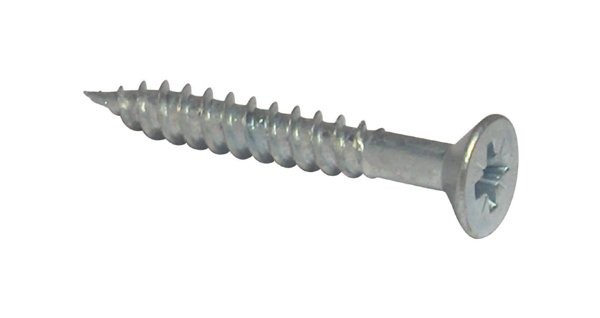Wood screws vs machine screws - what is the difference?
Choosing the right screw for a job can be very confusing and it is easy to make the wrong choice. Screws carry out an important function in helping us join and connect two materials together, and making the right choice in terms of type and size of screw means this connection will be strong, durable and long-lasting. Wood screws and machine screws are two of the most popular types of screw on the market, and names you may have heard countless times. But they are very different, and understanding how and why is important when you need to choose the right screw for your application.
This guide will look at wood screws and machine screws separately, and this will highlight how they are designed, what their key features are and what they are intended to do.
What is a wood screw?
A wood screw, not surprisingly, is designed to join two pieces of wood together, and its inherent design features are intended to ensure this is done safely and securely, while protecting the wood itself and enabling its natural characteristics to work as intended. So wood screws are commonly used in joinery and carpentry, and by DIY enthusiasts.
The key features of a wood screw are:
- Pointed end – All wood screws have a pointed end which is used to drive into the wood material. Wood screws can drive into untouched wood, without a pre-drilled hole, because the pointed end grips the material and drives into it without splitting the wood.
- Tapered shaft – Again, the tapered shaft is designed to protect the wood as the screw is driven in.
- Not fully threaded – A wood screw will not be fully threaded, it will usually be ¾ threaded. The thread will be what is known as a ‘coarse’ thread, so the gaps in the thread will be wider spaced and of a medium depth. This helps the screw grip the wood and maintain a strong hold, without damaging the grain of the wood and its essential integrity.
- Head – Wood screws can have a variety of heads. The hex head is very popular, while wood screws can also be round headed and countersunk. These flat screws can lay flush to the surface of wood and are good for internal features such as furniture, which you want to be decorative and appealing and without raised screw heads which present a safety hazard. The drive required for a wood screw can be either slotted or Phillips/crossed.
- Material – Wood screws are most commonly made of either steel or brass. They can be suitable for outdoor use.
What is a machine screw?
Machine screws are a much stronger and more durable type of screw, they are intended to join metal components together, most popularly metal sheet, but they can also join other rigid materials such as plastic sheet. Machine screws provide precision and strength and are used in heavy duty and industrial settings, usually for joining metal components, machinery and equipment. Machine screws are also designed to endure more extreme conditions. Another important difference between wood screws and machine screws, is that machine screws are often secured with a nut and a washer. These are separate components which are fitted as an assembly, and which help to protect the screw, but also add strength and stability. This is particularly important if the screw is carrying a heavy load, as the washer helps to spread this load, and also if the machinery or equipment creates a lot of vibration, as this assembly will help to keep the installation stable.
The key features of a machine screw are:
- Blunt end – A machine screw will normally be driven into a pre-drilled hole, so it doesn’t need the same pointed end that a wood screw does, as it is not breaching virgin material.
- Straight shaft – The shaft of a machine screw is usually straight. This is because the connection is required to be very precise, particularly where machinery and equipment is being joined and this needs to be accurate.
- Fully threaded – Most machine screws are fully threaded, and the thread will be much finer, smoother and more consistent than for a wood screw. Again, this is to assist with precision and because the hole being driven into will also often be threaded, so a fine thread enables a more secure hold.
- Variety of heads – The drive required for a machine screw can be varied; slotted or Phillips, but heads can also be hex, torx, flat, rounded, pan, oval or domed.
- Material – Machine screws are usually steel or stainless steel, and hence can be used externally.
Now that you understand the important differences between wood screws and machine screws, you can browse our range of screws and order online today.